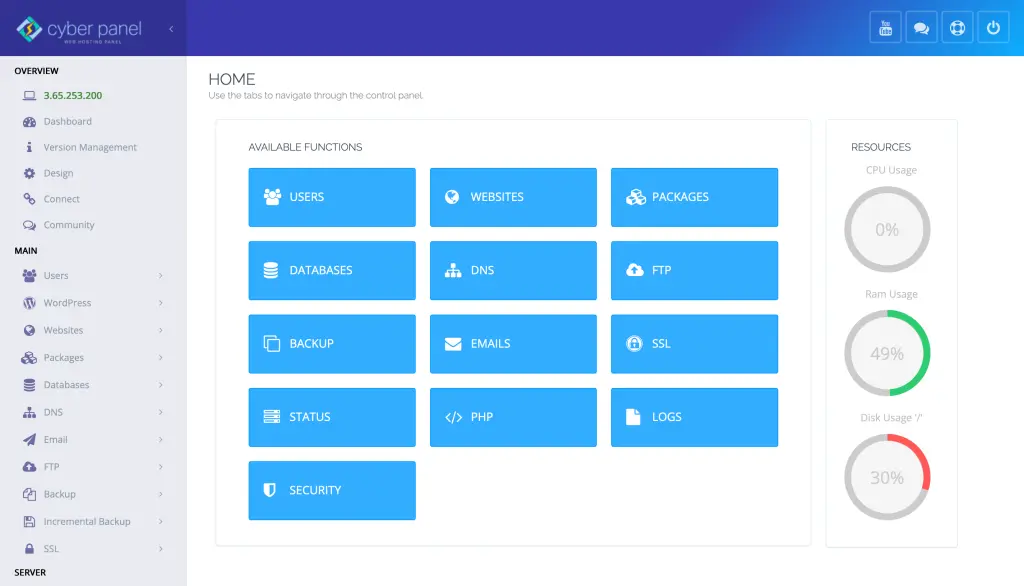If you’ve ever used Vim and thought to yourself, “surely there’s a better way to configure this thing,” you are correct. Vim’s true power lies with one small but powerful configuration file, that is our useful Vimrc file called the ‘.vimrc file.’
Vim can make your workflow much faster, reduce the keystrokes required, and allow you to shape the editor into exactly what you need. Whether you want to create a simple vimrc file to get through your everyday tasks faster or you’re searching for the ultimate vimrc to help you achieve pro status, learning how to efficiently create and maintain an effective vimrc file is a life-changer.
This guide takes you through the what the. vimrc file is, why you would want one, how to use one, and where this one can be simplified or made more complex—all the way from a basic setup down to some advanced tricks.
Let’s dive deeply!
What Is Vim And How Can a Useful Vimrc File Help
Vim is a potent and configurable text editor used all over the world by programmers and system administrators. Vim is special because it’s efficient and because all of the control is keyboard-centric, letting you edit code very rapidly and accurately.
The real power of Vim, however, activates when you run an effective vimrc file — which is a user-defined configuration file to automate and customize all the aspects of the Vim editor. When you leverage a. With your vimrc file, you will set an environment with all you will need so that when you start to code, you can do it faster with less repetition.
Get exclusive access to all things tech-savvy, and be the first to receive
the latest updates directly in your inbox.
If you’re serious about using Vim, you need to master your vimrc file, whether you’re doing basic improvements or building a development setup.
Understanding .vimrc File
The .vimrc file is a simple text configuration file loaded every time you start Vim. It resides in your home directory:
~/.vimrcThis file enables you to specify relevant settings, shortcuts, Vim behavior, and more through plugins. Each time you use a useful vimrc file, you’re giving Vim a detailed set of instructions on how you want it to behave. It’s kind of like creating a guidebook for your editor.
Many power users even have multiple versions of their .vimrc file—for your work, for personal projects, or for when you are in different environments like remote servers.
Why Should You Use A .vimrc File?
Using the .vimrc file customizes Vim from a default editor into a personal experience. Here’s what you gain:
- Speed: Include key remappings to reduce repeated commands.
- Customization: Specify your preferred theme, indent style, and more
- Plugins: Getting started with the implementation of tools like NERDTree or Airline.
- Consistency: Settings follow you between systems.
- Control: Customize Vim to do exactly what you like.
- Automation: One-off setup and never worry about it again.
A good basic vimrc is the ideal helper for you to learn Vim. Once you’ve settled in, you can build out with plugins and performance tweaks. The most useful vimrc file adapts to your coding framework
Basic. vimrc File Example
Here is a basic Vimrc file setup that would work for beginners:
" Enable line numbers
set number
" Highlight search results
set hlsearch
" Enable mouse support
set mouse=a
" Auto indent
set autoindent
set smartindent
" Set tabs to 4 spaces
set tabstop=4
set shiftwidth=4
set expandtab
" Show matching parentheses
set showmatch
" Use system clipboard
set clipboard=unnamedplusOutput:
So when you save this in your ~/. vimrc, and you’ll have line numbers, auto-indentation, and clipboard support in minutes, instantly making editing smoother.
Best Vimrc File: Advanced Configuration
Now that you have had a chance to see a basic version, let’s take it up a notch and look at the useful vimrc file that includes plugin management and performance tweaks. It is a pretty useful vimrc file for advanced users.

" Leader key
let mapleader=" "
" Enable syntax highlighting
syntax enable
filetype plugin indent on
" Color scheme
colorscheme desert
" Line numbers
set number relativenumber
" Clipboard
set clipboard=unnamedplus
" Faster scrolling
set ttyfast
" Show line and column
set ruler
" NERDTree toggle shortcut
nnoremap <leader>n :NERDTreeToggle<CR>
" Plugin manager (vim-plug)
call plug#begin('~/.vim/plugged')
Plug 'preservim/nerdtree'
Plug 'vim-airline/vim-airline'
call plug#end()Output:
It will install NERDTree for file browsing and Airline for a pretty status bar ( once you install plugins using ‘:PlugInstall.’ They make editing feel contemporary and streamlined.
Flowchart: How .vimrc Works in Vim Startup
graph TD;
A[Vim Launched] --> B{Check for .vimrc};
B -- Yes --> C[Load .vimrc Settings];
C --> D{Plugin Manager?};
D -- Yes --> E[Load Plugins];
D -- No --> F[Skip Plugin Loading];
C --> G[Apply Settings and Custom Commands];
G --> H[Vim Ready to Use]Common Errors & Troubleshooting
Here are some common errors and their solutions when you have a useful Vimrc file:
1..vimrc Not Loading
Fix: Make sure it’s named correctly .vimrc (with the dot) in your home directory.
2. Command Not Found or Error
Solution: Check the syntax again. Vim is case-sensitive, so I’d break the load with even one typo.
3. Plugin Not Installing
Solution: Run :PlugInstall. Also ensure your .vimrc has correctly declared plug#begin() and plug#end().
4. Slow Vim
Solution: Disable unnecessary plugins, cut down external scripts, and start the picture with –startuptime. Don’t use an overcomplicated autocommand.
5. Keyboard Mapping Doesn’t Work
Fix: Ensure mappings are set to the appropriate mode (nnoremap, inoremap, etc.) and do not interfere with existing bindings
6. Issues with File Format or Encoding
Solution: Set file format as needed (go: :set fileformat=unix or :set fileformat=dos) with appropriate encode (check if you need it: :set encoding=utf-8).
7.Recursive Plugin Call or Lag
Fix: Do not import the . You will be frequently loading these commands in vimrc, especially during plugin loading (try lazy loading as much as possible).
Solve Your Issue: Disable unnecessary plugins, cut down external scripts, and start the picture with –startuptime. Don’t use an overcomplicated autocommand.
Best Practices to Manage Your Useful Vimrc File
Here are some best practices when you have your useful Vimrc file:
- Comment Generously: Annotate every section so that future-you can pick it up.
- Fold into Logical Sections: UI, Navigation, Plugins, etc.
- Use :source ~/. incrementally vimrc on every major change.
- Track With Git: Always store in a GitHub repo – everything is a version and synced across systems.
- Test in Isolation: Test the new plugins/configs in a sandboxed way and then add them to the main file
- Keep It Simple: Resist feature creep. Add only that which improves productivity.
- Backup Frequently: Create backups before implementing updates.
Role of CyberPanel in Easy Configuration

CyberPanel is a robust web hosting control panel with OpenLiteSpeed. While. While vimrc targets text editing and development at the same time, CyberPanel helps you manage your web infrastructure more coherently. It offers:
- SSH management to edit your configuration.
- Provides support for scripting and automation tools — such as Vi-like editing through the CLI.
By using CyberPanel, developers can create their. seamlessly sync across different VPS setups vimrc preference.
FAQs
Where should I place my .vmrc file?
Put it in your home dir: ~/. vimrc.
Can I use the same .vimrc on multiple machines?
Yes! Keep it tracked with Git, and clone it wherever you smile.
How to reload changes in Vim without restarting?
Use the command :source ~/. vimrc to reload instantly.
Final Thoughts!
Vim is famous for its efficiency—but only if you tame it. The best way is to learn how to correctly use a useful Vimrc file. Whether you’re starting out with a basic vimrc file or cobbling together the best vimrc file setup in the world, every additional line you add customizes and refines your experience.
Make Vimrc personal, have fun with it, and see your editing flow revolutionize!



